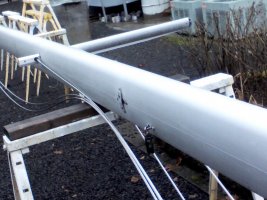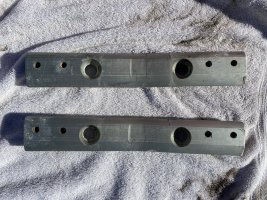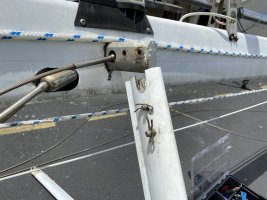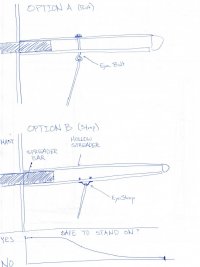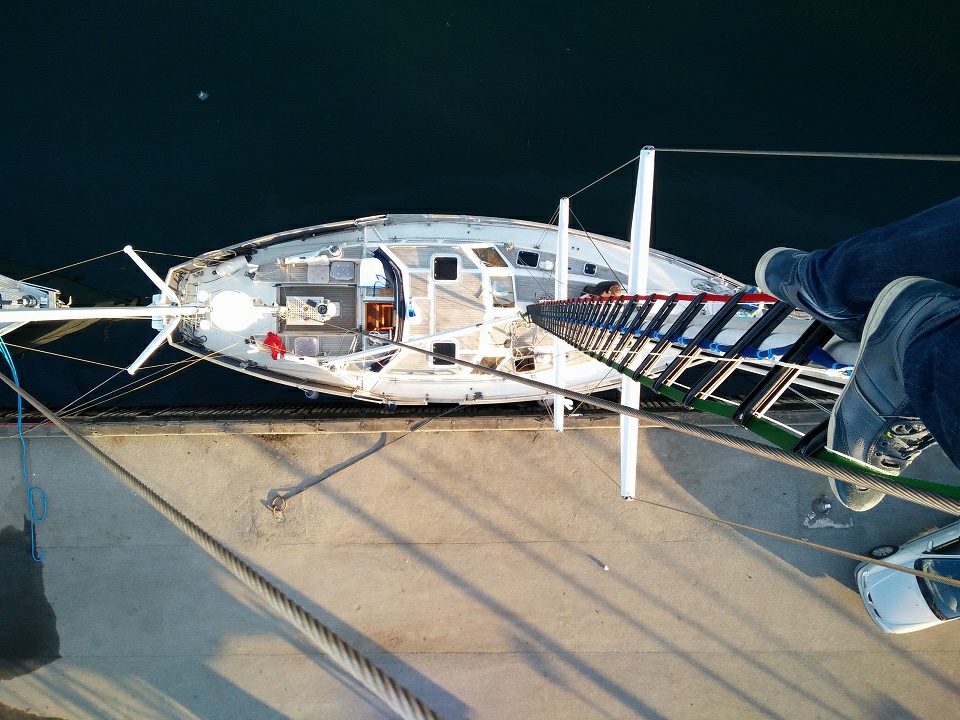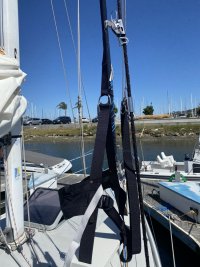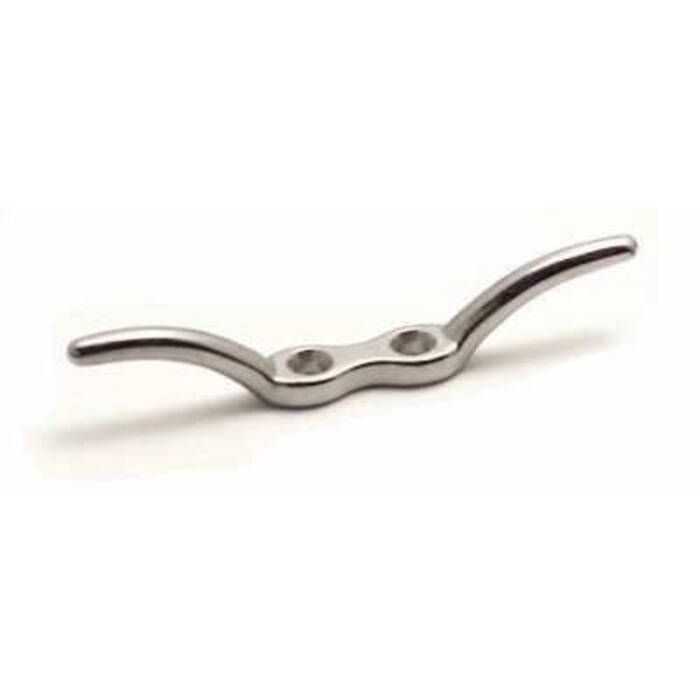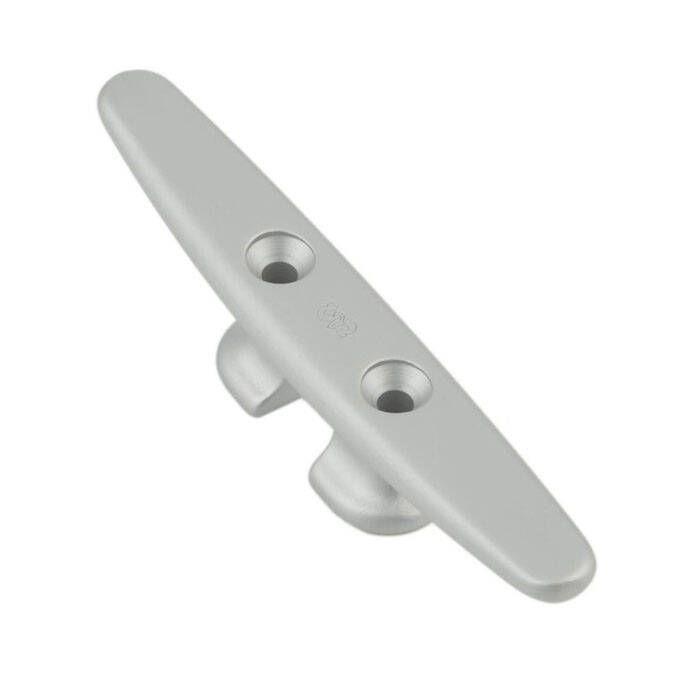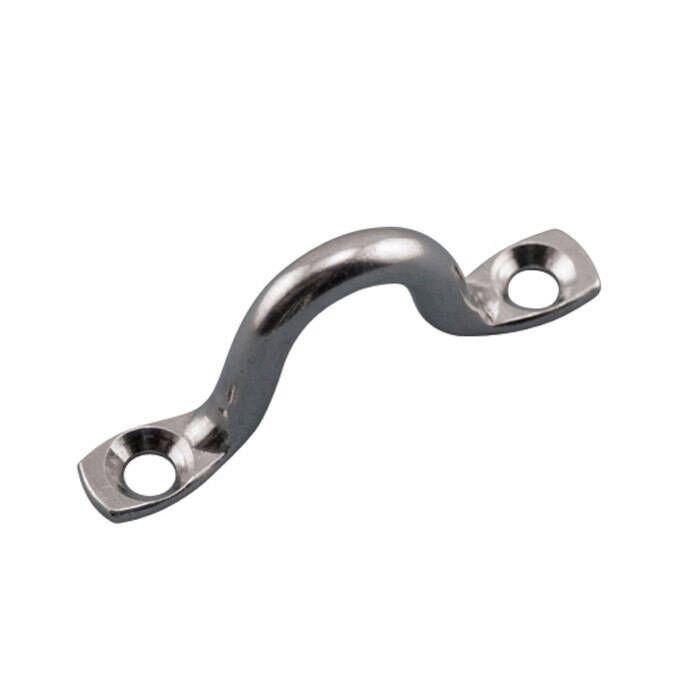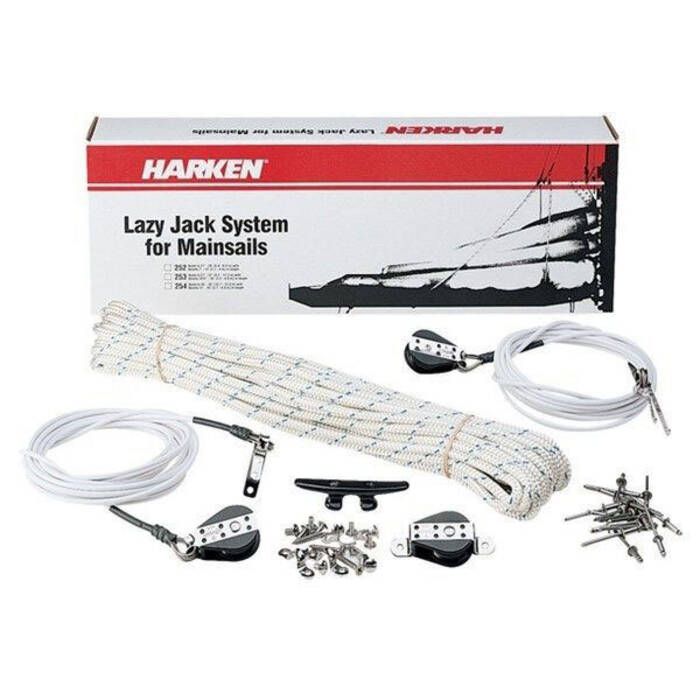I took a photo today of the spar while it's down. Not all the spreaders are mounted on the cross bars at present, altho the new standing rig is in place.
This shows one of the two little blocks (on one side, and same on opposite side) for the lazy jack line(s). Also visible is the keeper for the T-fiting for the running backstay/checkstay on that side.
Where to put that little lazy jack tackle block.... Probably several correct or at least acceptable answers to the placement of the block, but this install was done by the guys at UKSails NW, just down the street at a marina by their Sidney loft. I was willing to let them do the deciding, altho they did ask my opinion on how far up the spar I wanted it -- I deferred to their expertise.
This shows one of the two little blocks (on one side, and same on opposite side) for the lazy jack line(s). Also visible is the keeper for the T-fiting for the running backstay/checkstay on that side.
Where to put that little lazy jack tackle block.... Probably several correct or at least acceptable answers to the placement of the block, but this install was done by the guys at UKSails NW, just down the street at a marina by their Sidney loft. I was willing to let them do the deciding, altho they did ask my opinion on how far up the spar I wanted it -- I deferred to their expertise.

